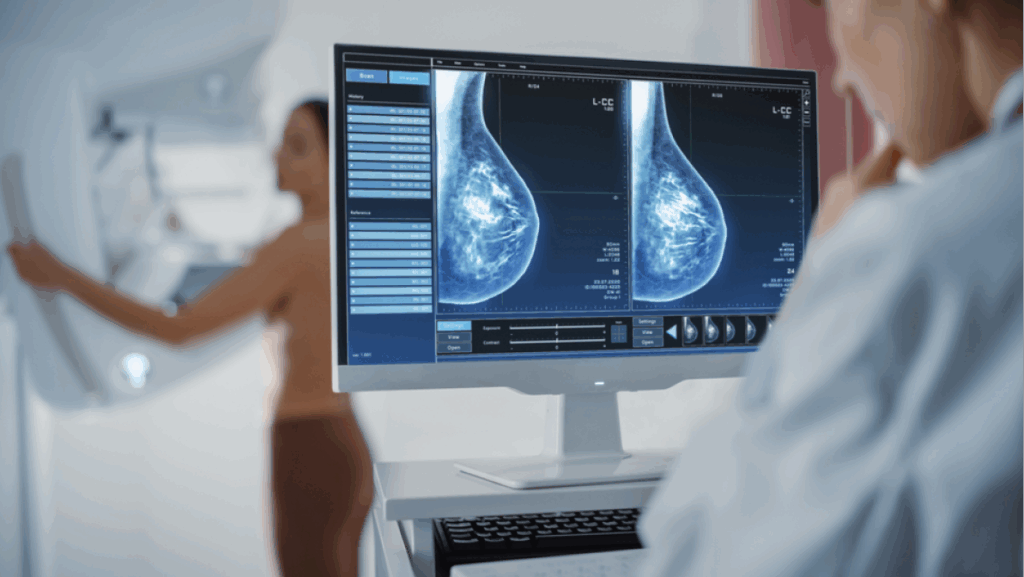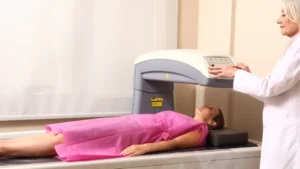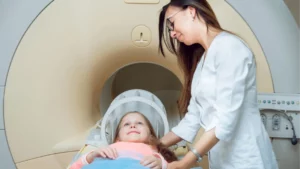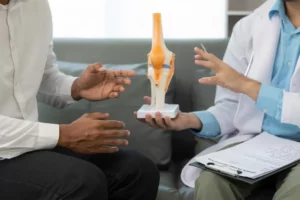Breast cancer continues to affect millions of women globally, making regular screening essential in the fight against the disease. Among the most trusted diagnostic tools available, mammograms are often the first line of defense in identifying breast cancer at its earliest stages. But many still ask: Can mammograms prevent cancer?
Understanding what mammograms can and cannot do is key to making informed decisions about breast health. While they may not prevent cancer from forming, mammograms play a crucial role in reducing breast cancer mortality by catching signs of cancer before symptoms appear.
What Is a Mammogram?
A mammogram is a low-dose X-ray that allows radiologists to examine breast tissue for abnormalities. It is a non-invasive and widely used tool for the early detection of breast cancer.
This screening method can identify lumps or tumors that are too small to be felt, enabling earlier diagnosis and increasing the likelihood of successful treatment. Do mammograms detect cancer early? Yes, this is one of the primary reasons they are recommended for women over 40.
Can Mammograms Prevent Cancer?

While mammograms do not prevent the development of breast cancer, they are a powerful tool in detecting it early, when treatment is most effective. So when people ask, “Can mammograms prevent cancer?” The better framing is that they help prevent late-stage cancer diagnoses.
Understanding how effective mammograms are in cancer prevention means recognizing that their value lies in early detection, which significantly lowers the chance of dying from the disease. In this sense, can mammograms reduce breast cancer mortality? Yes—they can, especially when performed regularly.
The Role of Mammograms in Cancer Prevention Strategies
So how effective are mammograms in cancer prevention? Mammograms serve as a cornerstone of modern cancer prevention strategies. By identifying cancer before it progresses, these screenings can guide immediate intervention and reduce the chance of spreading.
Routine mammogram screenings also empower individuals to monitor breast health regularly. The benefits of regular mammograms include early detection, reduced mortality, and improved treatment outcomes.
What Mammograms Can and Cannot Do

Understanding what mammograms are capable of and where their limitations lie can help individuals make more confident, informed choices about their breast health.
What They Can Do
- Detect cancer early: Mammograms can identify tumors or abnormalities before they are palpable or cause symptoms.
- Lower breast cancer mortality: Early detection of breast cancer through mammograms has been shown to reduce the risk of dying from breast cancer.
- Identify changes in breast tissue: They can reveal calcifications, masses, or distortions that may indicate cancer or benign conditions.
- Monitor previous abnormalities: Mammograms help track changes over time in previously noted areas of concern.
- Guide further testing: Findings from a mammogram can prompt additional tests, such as an ultrasound or a biopsy, for a more accurate diagnosis.
What They Cannot Do
- Prevent breast cancer: Mammograms do not stop cancer from developing; they detect it once it has already formed.
- Guarantee detection: Not all cancers are visible on a mammogram, especially in women with dense breast tissue.
- Replace other screenings: Mammograms are not a substitute for clinical breast exams, self-exams, or additional imaging when necessary.
- Differentiate all benign vs malignant growths: Further testing is often required to determine if an abnormality is cancerous
- Serve as treatment: While essential for diagnosis, mammograms are not a treatment method and must be followed by appropriate care if cancer is found.
Complementary Ways to Reduce Breast Cancer Risk
In addition to regular mammograms, several proactive measures can support breast health and potentially lower cancer risk.
Healthy Lifestyle
A balanced diet, regular physical activity, and maintaining a healthy weight can help reduce mammograms and breakfast cancer risk. Limiting alcohol and avoiding smoking also contribute to overall wellness.
Regular Clinical Exams and Self-Breast Exams
In between mammograms, clinical breast exams by a healthcare provider and regular self-exams can catch changes or symptoms that may require attention.
Knowing Your Family History and Discussing Genetic Testing if Needed
Genetic predispositions like BRCA1 and BRCA2 mutations can significantly raise the risk of breast cancer. Understanding your family history and pursuing genetic testing, if recommended, can help you and your doctor form a more tailored prevention strategy.
Hormonal Risk Factor Awareness
Understanding how hormone-based therapies can influence mammograms and breast cancer risk is crucial. Discuss long-term hormone use with your provider to weigh risks and benefits.
When Should You Start Getting Mammograms?

What age should you start mammograms? This depends on personal and family health history, but general guidelines provide a helpful starting point.
For women at average risk, mammogram screening guidelines typically recommend beginning annual or biennial screenings at age 40. Those with a higher risk—such as a strong family history or genetic predisposition—may need to begin earlier and receive screenings more frequently.
If you’re unsure about your risk, consult your physician to develop a personalized mammogram schedule that’s right for you.
Common Myths About Mammograms
Despite their widespread use, mammograms are often surrounded by misconceptions. Let’s address some of the most common myths.
Mammograms Always Catch Cancer
While mammograms are highly effective, they are not perfect. Dense breast tissue or small tumors may occasionally go undetected. This is why regular screenings, clinical exams, and sometimes ultrasound or MRI are used together for comprehensive assessment.
Mammograms Are Not Necessary Every Year
The question are mammograms necessary every year depends on your risk level. Annual screenings are recommended for women over 40 at average risk. For some women, a biennial schedule may be appropriate, but skipping too many years can reduce the chance of early detection.
Mammograms Cause Cancer Due to Radiation
Mammograms use a very low dose of radiation, far below the threshold that would cause harm. The benefits of early cancer detection far outweigh this minimal exposure.
Only Women With a Family History Need Mammograms
Most women diagnosed with breast cancer do not have a family history. Mammograms vs breast cancer prevention isn’t a matter of choosing one or the other—mammograms are essential for all women, regardless of genetics.
Taking Charge of Your Breast Health with Confidence
Mammograms are a vital part of early breast cancer detection, helping to reduce mortality by identifying cancer before it progresses. While they cannot prevent cancer from forming, they are highly effective at catching it early, which greatly improves treatment success. When combined with a healthy lifestyle, regular clinical exams, and awareness of personal risk factors, mammograms become a powerful tool in a broader prevention strategy.
One Step Diagnostic is committed to providing exceptional care and accurate results in a comfortable, supportive setting. Our state-of-the-art imaging technology and experienced team ensure that every patient receives the highest standard of breast health screening. Contact us today!




